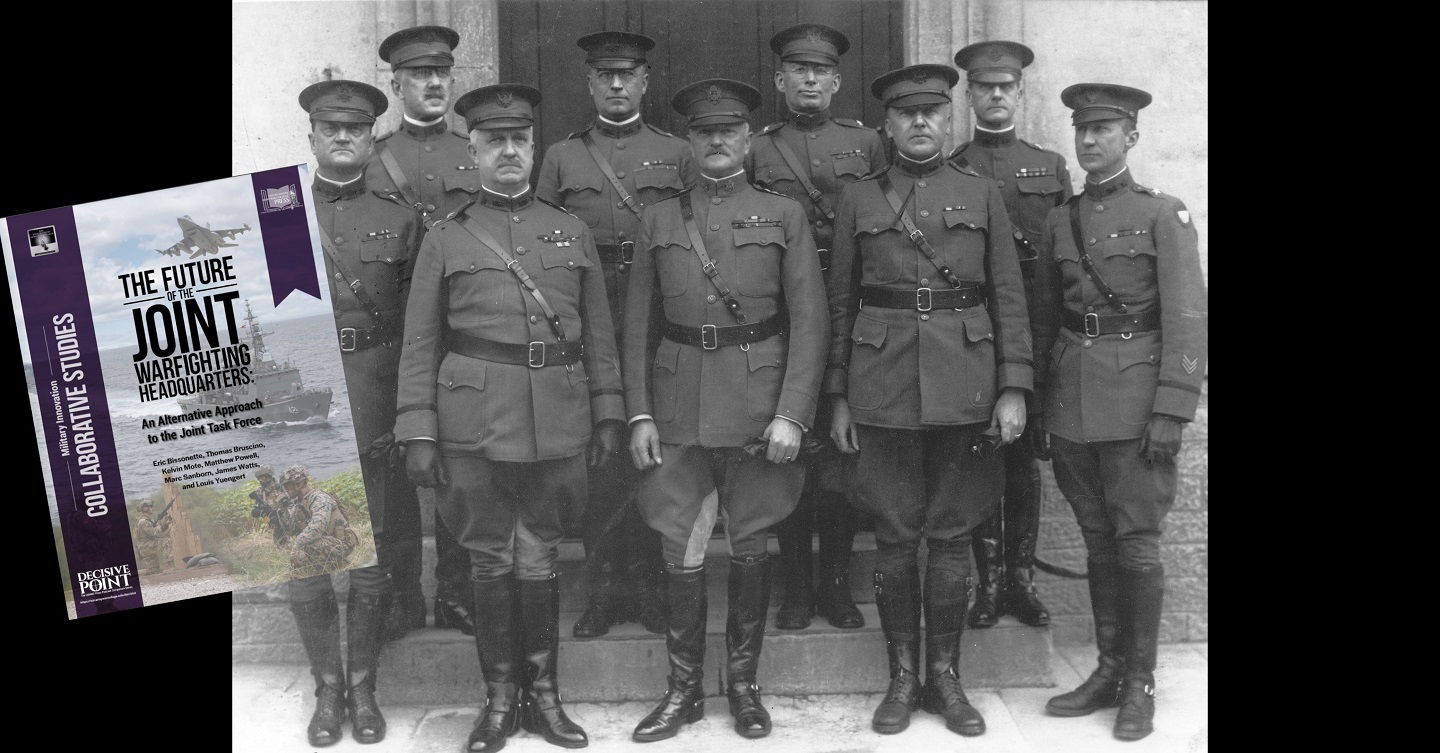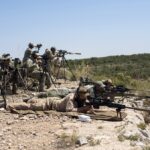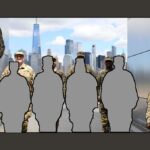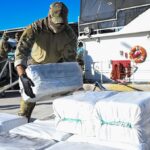
Successful military organizations are always assessing and adapting; this includes methods of command and control. The joint task forces with constituent air, land, and maritime components currently used by the U.S. military have demonstrated benefits, but are all too often ad hoc structures that take too long to stand up and fight as a cohesive team. Tom Bruscino and Lou Yuengert are in the studio to talk about their recently released manuscript, The Future of the Joint Warfighting Headquarters: An Alternative Approach to the Joint Task Force, which they wrote with fellow authors Eric Bissonette, Kelvin Mote, Matthew Powell, Marc Sanborn and James Watts. Tom and Lou argue that now is the time to create standing, numbered, and regionally aligned joint warfighting headquarters— American Expeditionary Forces (AEFs)—around a command council and a staff organized into Joint centers and cells. They join host Darrell Driver to share the thought process behind the organizational structure and why the U.S. military must become a superior and sustainable joint force sooner than its adversaries.
We can’t be playing with pick up teams, especially given our theory now that war will happen so fast and what happens at the beginning really makes a difference for what how it turns out overall.
Podcast: Download
Subscribe: Android | Email | RSS
Thomas Bruscino is an Associate Professor in the Department of Military, Strategy, Planning and Operations at the U.S. Army War College and the Editor of the DUSTY SHELVES series.
Louis Yuengert is the Professor of Defense Leadership and Enterprise Management in the Department of Command, Leadership, and Management at the U.S. Army War College. He is a former course director for the Defense Management core course and he teaches with the Carlisle Scholars Program, a special program.
DARRELL DRIVER is Professor in the Department of Military, Strategy, Planning and Operations at the U.S. Army War College.
The views expressed in this presentation are those of the speakers and do not necessarily reflect those of the U.S. Army War College, U.S. Army, or Department of Defense.
Photo Description: Gen. John J. Pershing, Commander of the American Expeditionary Forces (AEF) and his General Staff at the AEF Headquarters, Chaumont, France, circa 1917-18.
Photo Credit: U.S. Army photo





Will American Expeditionary Forces — or the Combatant Commands — or both — be responsible for dealing with China and Russia’s “win without fighting” concepts and related actions and activities?:
“China and Russia are positioned to ‘win without fighting’ when it can control the narrative and facts on the ground, so the Army must establish a truthful narrative to contest that approach during both competition and crisis phases of operation, it adds.”
(See the Oct 10th, 2022 Defense News article “US Army Adopts New Multidomain Operations Doctrine” by Jen Judson.)
To allow that my question above might be adequately addressed, let me suggest what may be the most critical “winning without fight” approach/narrative — that is being pursued by actors both here at home and there abroad — and, accordingly, which might be most concerning to us.
This such approach/narrative being one that suggests — and points to with evidence — that the U.S./the West’s post-Cold War “revolutionary” efforts to “transform the world” — this, so that same might be made to better interact with, better benefit from and better provide for such things as capitalism, globalization and the global economy — this such effort has been and continues to be too socially and regime destabilizing. Thus, the world should look to nations such as Russia and China (and to the social conservatives here in the U.S./the West?) who offer models which (a) favor social and regime stability over (b) such things as capitalism, globalization and the global economy.
Questions: Who handles these such (most concerning?) “winning without fighting” efforts/narratives, being pursued by actors both here at home and there abroad? (American Expeditionary Forces, the Combatant Commands or both?) And what staff officer, in these such organizations, is responsible for dealing with these such matters — in competition — and in crisis?
In my initial comment here, we find this quote from our article above:
“China and Russia are positioned to ‘win without fighting’ when it can control the narrative and facts on the ground, so the Army must establish a truthful narrative to contest that approach during both competition and crisis phases of operation, it adds.”
(See the Oct 10th, 2022 Defense News article “US Army Adopts New Multidomain Operations Doctrine” by Jen Judson.)
Question:
If the major frame and narrative that our opponents are presenting (see my second comment above) are, arguably, “truthful” (or at least reasonable and worthy of consideration to the parties concerned),
Then what alternative/opposing frame and narrative can the Combatant Commands (in competition) and the American Expeditionary Force (in crisis) present — in some effective way?
I enjoyed this topic and wish to add: Currently, the 5th Marine Expeditionary Brigade Headquarters, a forward stationed and assigned unit of USMARCENT and USCENTCOM, is a “JTF Certified” HQ but contains only a “skeleton” number of staff personnel on a day to day basis. This HQ is Joint Task Force (JTF)-certified by exercise and validated by their Service HQ and Combatant Command (CCMD). When required, the 5th MEB HQ, lead by a one-star USMC Brigade Commander, will be designated a JTF for a specific operation or campaign and, at which time, will request joint augmentation from the other service component headquarters within USCENTCOM. The CCDR orders will establish the JTF designation, Joint Manning Document (JMD) approval, and the task, purpose, and end state of the JTF’s operating charter. If billets cannot be filled by existing personnel within the service components, then CCMD will request for forces (RFF) the gapped/unfilled billets. Given this Marine Corps input, we really aren’t far from where the authors state that we need to be with regard to numbered AEF formation. However, this is only one of many CCMDs that need to have a similar JTF standup playbook. The Joint Staff J3/5/7 under the Chairman, Joints Chiefs of Staff (CJCS) should further develop this initiative as a Global Integration initiative.